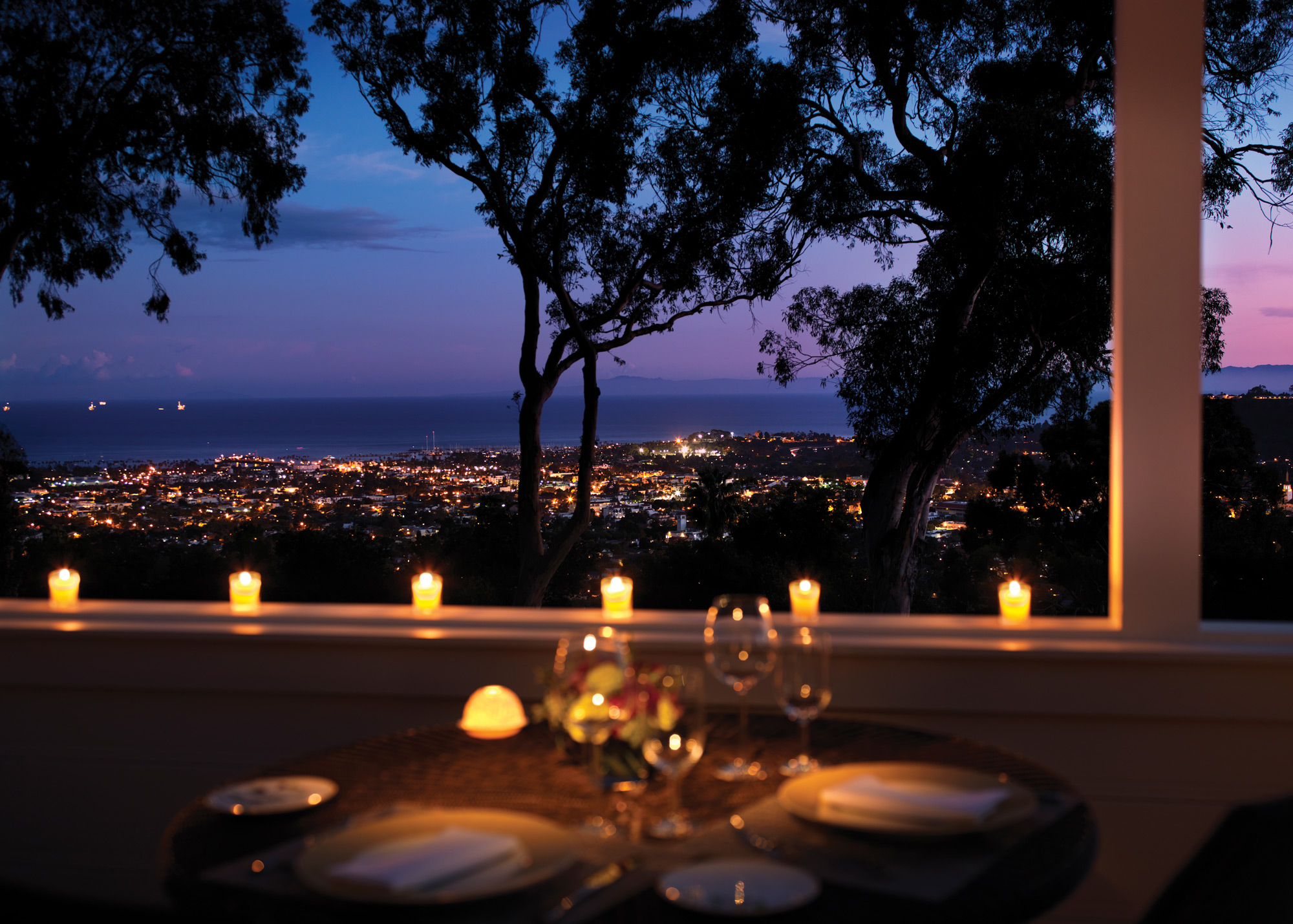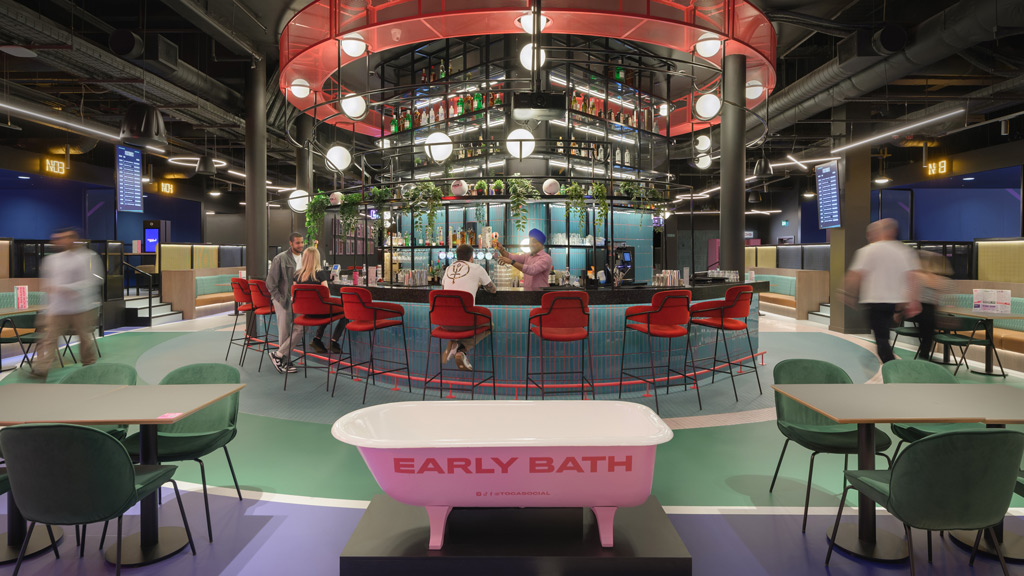How Immersive Food and Beverage Experiences Are Redefining Hospitality
November 06, 2024 | Q&A with Ann Morrow Johnson and Emilie Baltz
As retail, hospitality, and entertainment converge, food and beverage experiences are being designed to incorporate more narrative storytelling, interactive participation, and unexpected multi-sensory engagement. Millennials and Gen Z consumers especially are seeking out experiences rather than material possessions, and food and beverage offerings have the unique potential of being experiential destinations that authentically convene community in a way that is familiar, universal, and ultimately transformative. We spoke with Emilie Baltz, Creative Director, Global Leader of Digital Experience Design (DXD) and Ann Morrow Johnson, Global Leader of Entertainment, about designing food and beverage experiences that evoke emotions and use design to connect people to place.
“Immersive” food and beverage (F&B) concepts have been gaining popularity as experience design becomes more commonplace. Why do you think this space lends itself particularly well to the immersive treatment?
Ann Morrow Johnson: Food is both part of our everyday routine and a core way that people connect. So, novel ways to break bread really feel like an event. A surprising presentation, atmosphere, or taste — like a smoking, glowing jelly in a dimly lit space — becomes something worth discussing, worth celebrating. Food brings people together; having that be an opportunity for the unexpected breeds delight.
Emilie Baltz: Food is naturally immersive. When we eat, we don't just taste: we see, smell, hear and feel the food. Flavor is a choreography of all of our senses. This kind of multisensory design is the foundation of immersive experience. If we want to transport someone out of their everyday, we have to design for all of their senses.
Immersive food and beverage concepts can thrive because they also tap into our deepest senses and emotions, creating experiences that resonate on multiple levels. Food has always been more than sustenance; it’s a medium for storytelling, connection, and exploration. In our increasingly digital world, where interactions can feel superficial, immersive food & beverage experiences invite us to engage more authentically with each other through our body, mind, and spirit. It’s not just about eating; it’s about feeling, experiencing, and connecting in a world that often feels disconnected.
When designing for impactful F&B experiences, scale comes to mind. The details of a single dish can activate an emotional response or a sensory experience, while the environment as a whole can also completely transport you. How do you orchestrate a multi-sensory narrative that satisfies consumers at multiple scales?
AMJ: We often create a focal point, then design ways to amplify around it. For example, a sweet shop known for a dessert with a single glittering cherry that’s unexpectedly sour atop a fount in a dessert experience might call for Easter-egg pastels, soft surfaces, and curves. In another experience, we created a whole course around a scent. When it was presented, the light dimmed, a swell of romantic music rose, and servers wafted through the space as they swung scented steam into the air. Everything from space to light to music to taste to detail is a tool to evoke emotion; it’s about harnessing those into a complete scene with all attributes complimenting one another.
EB: I am reminded of the old cliche that the glass of Chianti, sipped slowly on an Italian terrace at sunset, is always better than the glass of the same bottle your pour when back home in your kitchen. Food & beverage design is a perceptual science; i.e., the taste of a wine is as affected by its environment, as it is by the grapes within it. The challenge in designing a successful multisensory narrative is not only in creating the right compliments to a dish, as you mention, Ann Morrow, but also in unlocking a narrative that is meaningful to guests. In today’s day and age, purpose and impact mean a great deal to consumers. Connecting people to place, knowledge and transformation are drivers of engagement. The role of story in these experiences is key.
I’ve always admired Dan Barber’s vision at Blue Hill at Stone Barns: he combines the dining experience into the farming experience, offering guests not only a heightened sensory experience of the ingredients they are eating, but also uses the experience to educate them first-hand of the effect of their everyday food choices. Using immersion to drive purpose and impact in this way reveals how the design of a menu or a restaurant can also affect larger scales of systemic change.
How are you seeing technology and digital experiences augment food and beverage destinations?
AMJ: Digital experiences, from projection-mapped table surfaces and food items to programmed audio cues that coincide with a first bite, are creating increasingly strong personalization, storytelling, and theatrical flourishes in the dining experience when it is used as part of a show. Behind the scenes, technology is more often used to reduce friction points associated with operationalizing the increasingly complex choreography or capacity of many dining experiences.
EB: The integration of tech allows us to create layers of interaction that can enhance every aspect of the dining experience. Imagine entering a restaurant where your experience begins before you even sit down — maybe through an app that sets the stage for your meal, sharing the story behind each dish or introducing you to the chefs and their inspirations. This builds anticipation and creates a personal connection before the first bite. Social media also allows us to extend the reach of F&B destinations, allowing diners to discover new restaurants and draw more footfall into unexpected destinations, all of which positively impact a city's economics. In the front of house, we can digitally choreograph lighting and sound design to seamlessly support different moods for different parts of the day or night, improving guest experience without effort on behalf of an operator.

Food and beverage overlaps with many other industries in retail and entertainment. What insights can F&B take from these other spaces to innovate the guest experience? Or vice versa: where should other industries look to the innovations in F&B design to elevate their guest experiences?
AMJ: While some immersive food experiences can feel exclusive and niche, the idea of designing a multi-sensory experience that engages guests is fairly universal. Hospitality and entertainment have increasing overlap and applicability as people increasingly want to feel like they are having a complete experience – a drink and accessor and take-home playlist that all reinforce the experience they have bought into. But just thinking about what engages multiple senses, feels delightful, and helps people connect are applicable in everything from spas and museum exhibits.
EB: In retail, there’s a big focus on creating immersive shopping experiences. F&B can learn from this by integrating elements that make dining feel more like an event. Think about pop-up dining concepts that mirror the excitement of a new product launch or collaborations with local artists that transform a meal into a multi-sensory spectacle. Creating a sense of place and excitement around food can turn a simple meal into a memorable experience that guests want to share and revisit.
We can also take inspiration from entertainment’s ability to weave together storytelling & engagement and bring it (literally) to the table. Imagine a themed dinner that could unfold like a live performance, each course treated like a chapter of a story guests can participate in.
We’re also seeing a huge push towards flexibility in the design of mixed-use destinations. Embrace this by designing food & beverage venues that serve various purposes throughout the day; for example, transforming from a café in the morning to a cocktail bar at night. This kind of flexibility not only engages different audiences, but also invites guests to see these spaces as part of their everyday lives, encouraging loyalty and connection.
Emilie, you wrote a cookbook that explores the relationship between food and the emotion of love. One of the five universal attributes of immersive design that Ann Morrow and her team have identified is Sensory + Emotionally Engaging. Could you both share a food or dining memory that was particularly emotionally engaging?
AMJ: My best food memories are the ones that became a vehicle for connecting with someone. A proprietor sharing some homemade limoncello as we sat on a terrace chatting and overlooking the Tuscan countryside, for example; or learning to crimp meat pies and sneaking spoonfuls of tabouli while hearing about a friend’s Lebanese traditions.
EB: My goal with writing the L.O.V.E Foodbook was to explore all the different flavors of love by interviewing 15 of the top chefs and mixologists on their definitions of love, expressed through food & drink. One of the most memorable meals I had during this process was interviewing the Belgian chef, Kobe Desramaults, at his Michelin-starred restaurant In de Wulf. I asked Kobe what his definition of love was. He pulled out two pigeons. He stuffed them with hay, lightly smoked, and let them ferment for two weeks, which made their tough meat become soft and slightly bitter from the fermentation. Kobe then cooked the pigeons slowly in churned butter and served them, still hot. “I grew up in this farm we are eating in right now,” he said. “When I was little, I didn’t have any friends here. I just had the pigeons. Every day they would come and visit me. I gave them names, we played. They were my friends. One day, my mother came to me and said, ‘Kobe, we have to kill the pigeons’.... ‘Why?’ I asked....’Because we have to eat’, she said.”
One bite of this dish and you taste the sweetest, tenderest flavor, yet also slightly bitter, hinting at the loss and sacrifice within his first experience of love. This dish still brings tears to my eyes: it was one of the most perfect translations of another person's emotions. I think that it is a gift to use multisensory design in such a way to create more intimacy between people.
For media inquiries, email .

